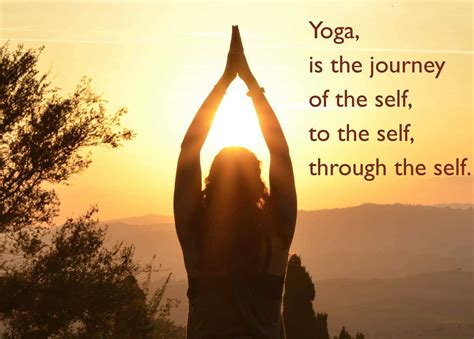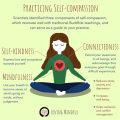Harnessing the Power of Yoga: A Guide to a Positive Life Journey
Introduction
Yoga, an ancient practice originating from India, has grown into a worldwide phenomenon celebrated for its mental, physical, and spiritual benefits. From stress relief to improved flexibility and mindfulness, yoga offers a holistic approach to well-being. However, understanding how to integrate yoga into a positive life journey requires a deeper exploration of its principles, historical significance, practical applications, and future implications. This guide delves into the key components of yoga, offering insights into its role in enhancing everyday life and providing actionable steps to fully harness its power.
Key Concepts of Yoga
Yoga is much more than physical postures or exercises (asanas). It encompasses eight limbs, each of which contributes to personal growth and a balanced life. The eight limbs are:
- Yamas: Ethical guidelines focusing on non-violence, truthfulness, and other moral behaviors.
- Niyamas: Personal disciplines like cleanliness, contentment, and self-study.
- Asanas: Physical postures aimed at improving strength, flexibility, and concentration.
- Pranayama: Breath control techniques that enhance energy and calm the mind.
- Pratyahara: Withdrawal from external distractions to focus inwardly.
- Dharana: Focused concentration.
- Dhyana: Meditation and mindfulness practices.
- Samadhi: A state of ultimate bliss and union with the divine.
Historical Context
The origins of yoga can be traced back over 5,000 years to ancient India, with the earliest references found in the Rig Veda. Initially, yoga was a spiritual and philosophical discipline, developed as a path to enlightenment. Over time, it evolved to incorporate physical practices, particularly through the teachings of Patanjali in his Yoga Sutras (circa 400 CE). These writings outlined the eight-limbed path of yoga, which remains a cornerstone of modern practice.
In the 20th century, yoga gained global recognition through pioneers like T. Krishnamacharya and his students B.K.S. Iyengar and Pattabhi Jois. Their teachings focused on alignment, sequencing, and breath work, laying the foundation for contemporary styles such as Hatha, Vinyasa, and Ashtanga yoga.
Current State Analysis
Yoga today is a multifaceted practice, with millions of practitioners worldwide. While some focus on the physical aspects—attending classes aimed at improving fitness—others dive deeper into meditation, breath work, and the philosophical elements. Yoga’s influence extends beyond the mat, permeating wellness communities, workplaces, and even schools as a tool for stress management, mental health improvement, and fostering mindfulness.
However, the commercialization of yoga has sparked debates about its authenticity and accessibility. While the practice has been embraced globally, there are concerns about whether its deeper spiritual roots are being diluted. Additionally, yoga is often perceived as an elite activity, accessible only to certain socioeconomic groups, leading to discussions on how to make yoga more inclusive.
Practical Applications
Yoga can be applied in various aspects of life, from mental well-being to physical health and even productivity. Below are some key ways in which yoga enhances different aspects of life:
- Mental Health: Regular yoga practice reduces anxiety and depression by promoting relaxation and releasing stress.
- Physical Health: Yoga improves flexibility, strengthens muscles, enhances posture, and can help manage chronic pain.
- Productivity: Incorporating mindfulness and pranayama techniques into the workday increases focus, reduces burnout, and improves decision-making.
- Relationships: Yoga fosters self-awareness and emotional regulation, which can enhance interpersonal relationships by encouraging empathy and reducing conflict.
Case Studies
| Case | Application | Outcome |
|---|---|---|
| Corporate Wellness Program | Yoga sessions incorporated into daily routines. | Improved employee morale, reduced stress levels, increased productivity. |
| Therapeutic Yoga for Chronic Pain | Personalized yoga routines for chronic back pain. | Significant reduction in pain and increased mobility after 12 weeks. |
| Yoga in Education | Mindfulness and simple asanas integrated into school curriculums. | Improved focus, reduced anxiety, and better emotional regulation in students. |
Stakeholder Analysis
Different groups benefit from yoga in various ways:
- Individuals: Gain physical and mental well-being, personal growth, and mindfulness skills.
- Healthcare Providers: Use yoga as an adjunct treatment for conditions like anxiety, depression, and chronic pain.
- Corporate Leaders: Leverage yoga to improve employee wellness, reduce stress, and enhance productivity.
- Communities: Promote social cohesion and collective well-being through community yoga programs.
Implementation Guidelines
To successfully integrate yoga into daily life, consider the following guidelines:
- Start Small: Begin with simple poses and breathing exercises before gradually incorporating more advanced practices.
- Consistency is Key: Make yoga a regular part of your routine to experience long-term benefits.
- Seek Guidance: Work with a certified yoga instructor, especially if you’re new to the practice or have health concerns.
- Focus on Breath: Pranayama is crucial for calming the mind and improving overall focus.
- Personalize Your Practice: Tailor yoga routines to meet your specific physical and mental needs.
Ethical Considerations
While yoga is often considered a universally beneficial practice, there are ethical considerations to keep in mind:
- Cultural Appropriation: The global commercialization of yoga sometimes strips the practice of its cultural and spiritual significance. It is important to honor its roots and acknowledge its origins in Indian culture.
- Inclusivity: Efforts should be made to make yoga accessible to people from all backgrounds, including those with physical disabilities or financial limitations.
Limitations and Future Research
While yoga offers numerous benefits, there are limitations to consider:
- Scientific Research: Although there is growing evidence of yoga’s positive effects, more rigorous, long-term studies are needed to fully understand its potential in treating specific health conditions.
- Accessibility: Yoga classes and materials are not always accessible to underserved communities. Future research could focus on creating more inclusive practices.
Future research may explore yoga’s impact on cognitive health, its potential in trauma therapy, and innovative ways to incorporate yoga into public health initiatives.
Expert Commentary
Incorporating yoga into a positive life journey requires a holistic understanding of its principles and benefits. As an expert in the field, it’s clear that yoga offers a comprehensive approach to well-being, blending physical, mental, and spiritual practices. Its ability to reduce stress, improve health, and promote mindfulness makes it a valuable tool for both personal development and communal well-being. However, practitioners must be mindful of respecting yoga’s cultural roots and working toward inclusivity, ensuring that its benefits are accessible to all.








